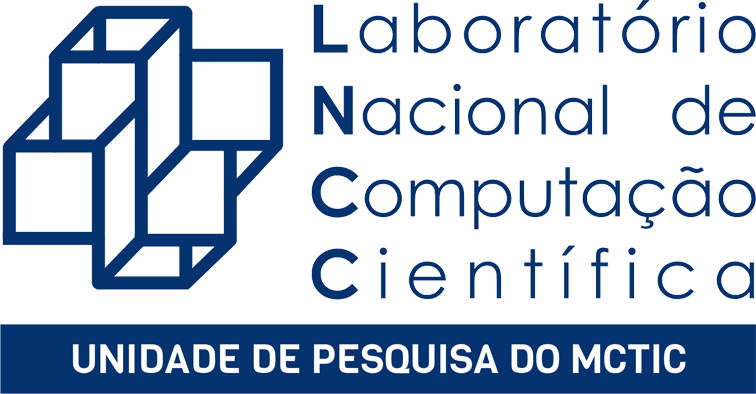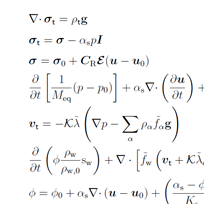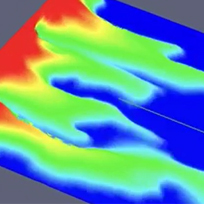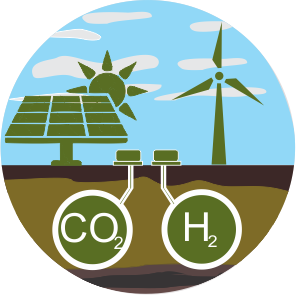Words about us
The mission of the COMOPORE group (Computational Modelling of Porous Materials) is the development and implementation of new multi-scale computational models to describe the hydro-mechanical coupling in processes related to hydrocarbon prospecting in petroleum reservoirs, as well as the construction of computational tools to integrate fine escale information in commercial simulators used by industry.
Our Latest Publications
Our Projects
Multiscale Hydro-Geomechanical Computational Modeling of Carstified Fractured Carbonates.
Period: 08/2018 a 08/2023
The carbonates of the Brazilian pre-salt area are characterized by the presence of geological complexities and accurate modeling is required in order to describe this class of formations. As typical examples of such complexities, we can highlight karst facies, fractures, joints, faults, and veins. In particular, karstification occurs during infiltration of meteoric water or water coming from the center of the earth, which dissolves the host rock, leading to the appearance of highly irregular structures such as caves, sink holes, vugs, and enlarged fractures. In this project, we construct a methodology to compute equivalent properties as a function of the reservoir stress state. Such methodology can be used to incorporate the presence of the complex geological structures (finer scale) in reservoir simulators (macro scale).
Interactive Digital Atlas with 3D Visualization of Analogs in Various Scales and Multiscale Modeling
Period: 08/2018 a 12/2020
Scientific cooperation project directly involving seven Brazilian universities (UFRN, UNB, UFG, UFSC, PUC-Rio, UNISINOS, LNCC) along with the collaboration of foreign universities, working in areas of geological, mathematical, and computational modeling of oil and gas reservoirs. The research of the COMOPORE / LNCC group in this project focuses on the modeling of geological formations with the presence of fractures and caves, typical of the Brazilian pre-salt reservoirs, using geological and petrophysical data acquired from outcrops similar to the pre-salt, more specifically, in Lajedo Arapuá (RN) and in the Furna Feia region (RN).
Characterization, Multiscale Modeling and Numerical Simulation of Unconventional Gas Reservoirs in Shales
Period: 11/2012 a 05/2016
Shale formations are among the main energy reserves on the planet and the correct exploration of this source of natural gas can greatly expand worldwide energy supply. However, the modeling of these unconventional formations is very complex, involving several length scales and multiple physical and chemical processes. In this project, we built a multiscale computational model that accurately describes the hydrodynamics in shale gas reservoirs.
Numerical Simulation of Multiphase Flows in Heterogeneous Carbonates Incorporating Data Assimilation and Geomechanical Coupling With Adjacent Rocks: Application to the Pre-Salt
Period: 12/2012 a 06/2018
This project is a natural extension of the previous project, with the development of new algorithms based on the iteratively coupled geomechanical formulation, in addition to the resolution of the transport subsystem using higher order non-oscillatory finite volume methods. Numerical solutions to problems related to secondary recovery processes are obtained using, as input data, realizations of the permeability and elastic constant fields built from log-normal distributions. It is worthwhile highlighting the development of new numerical methods for three-phase flow, the geomechanical coupling with capping salt rocks, the assimilation of data via Markov-Chain Monte Carlo techniques, the incorporation of geochemical effects, as well as the execution of three-dimensional numerical simulations.
Numerical Flow Modeling and Simulation in Heterogeneous Reservoirs with Geomechanical Coupling
Period: 01/2008 a 11/2012
Development and implementation of a computational model to simulate two-phase flow in two-dimensional heterogeneous reservoirs characterized by hydromechanical coupling, using locally conservative numerical methods. Development of multiscale computational models in parallel computing environments to numerically address the problems arising from biphasic flow modeling in elastoplastic porous media. Computer simulation of the water injection process in oil reservoirs considering the geomechanical effects on production.
Partners We've Worked With
About LNCC

The National Scientific Computing Laboratory, founded in 1980, is a brazilian research institute working under the Ministry of Science, Technology, Innovation and Communication (MCTIC). The mission of LNCC is to promote research, development, and innovation in the field of scientific computing, train human resources at graduate levels, and provide high performance computational services to the scientific community. To accomplish its mission, LNCC has interdisciplinary teams of scientists attacking important problems in science, offers a well-structured and research-guided multidisciplinary PhD program in computational modeling, and hosts the most powerful supercomputer in Latin America, Santos Dumont.
Contact Us
-
Getúlio Vargas Avenue, 333 - Quitandinha
Petrópolis, Rio de Janeiro, Brazil
-
+55 24 2233-6149






















